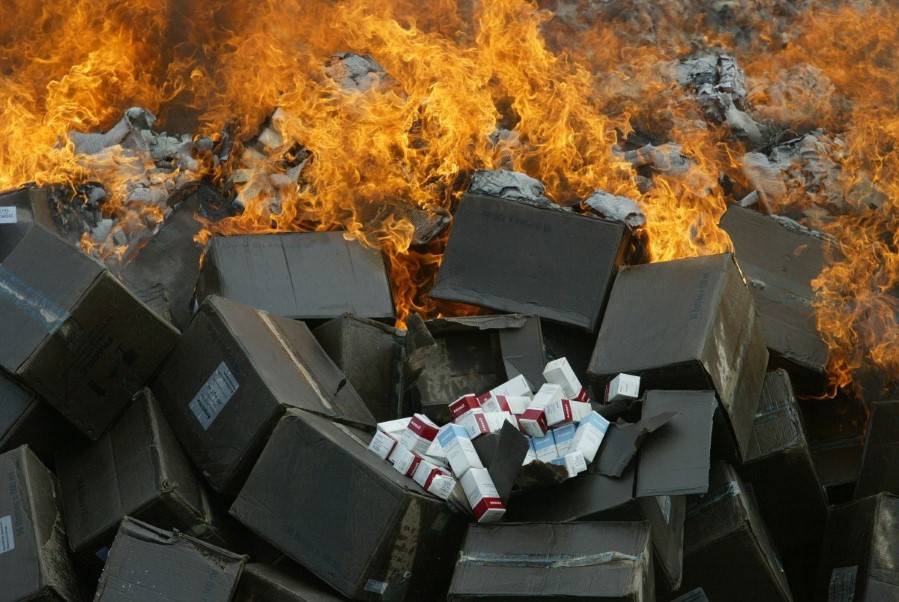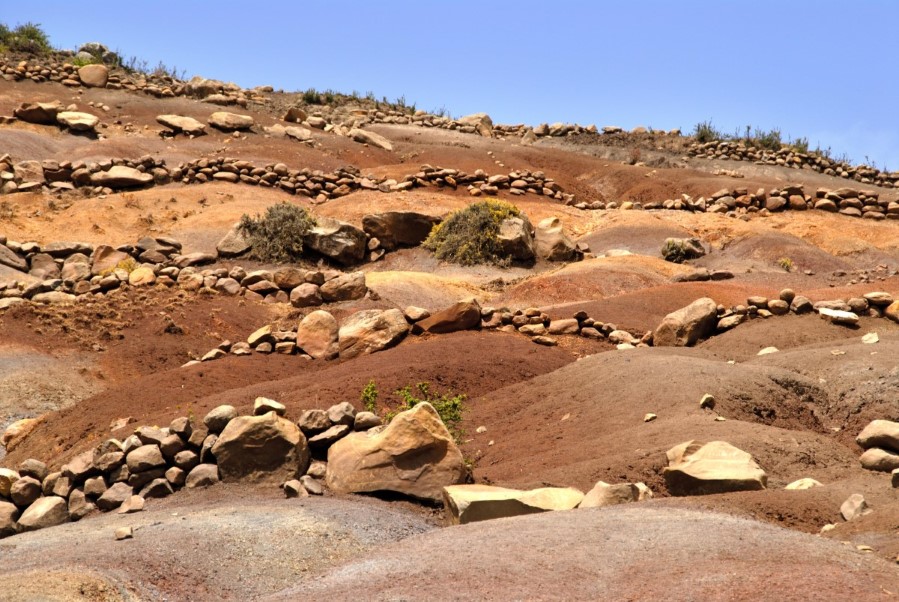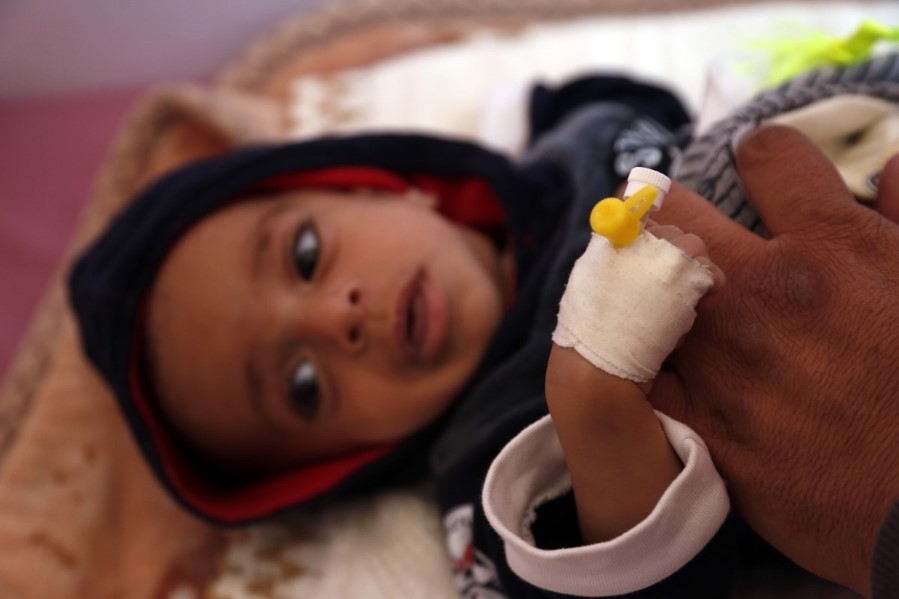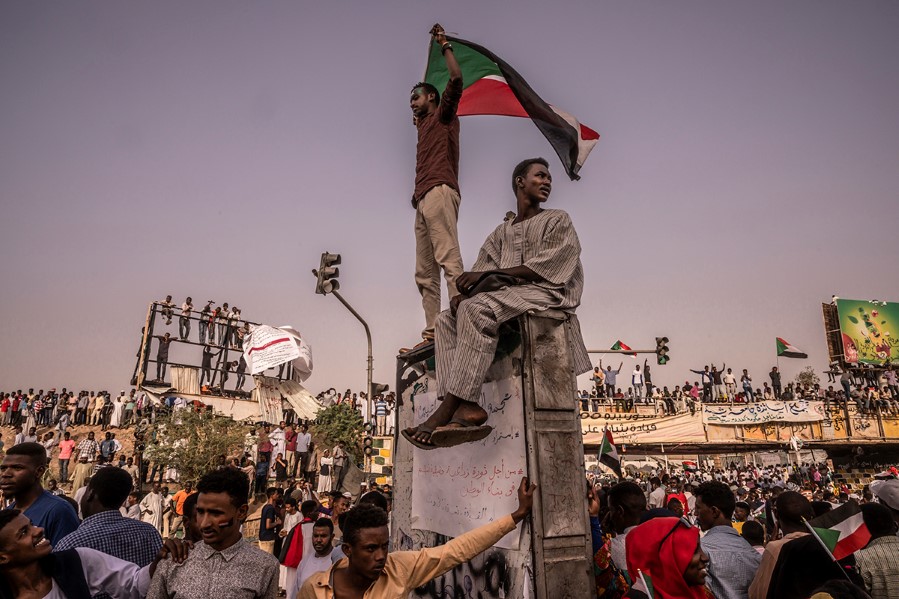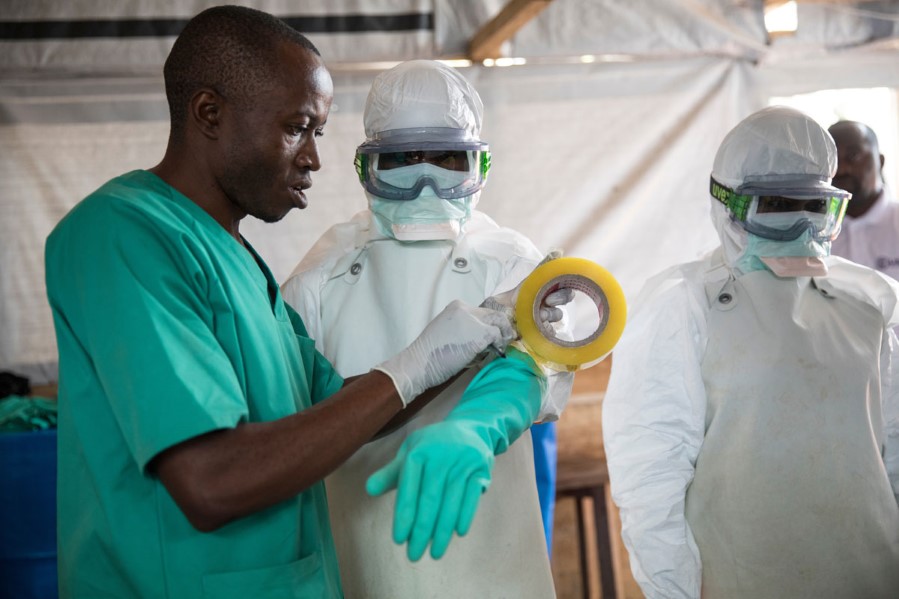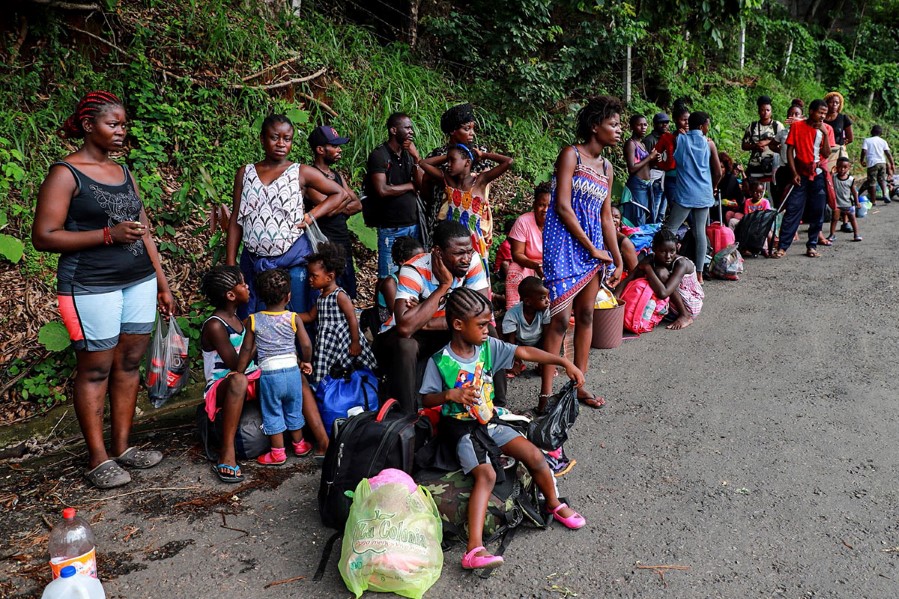Hun peker på pandemier, terrorisme og masse-migrasjon med utgangspunkt i Afrika.
– Afrika representerer allerede en direkte trussel mot global stabilitet og denne trusselen vil bli forsterket av klimaforandringer, skriver hun.
Det er ti år siden Dambisa Moyo skrev sin kjente bok «Dead Aid». Den var et kraftig oppgjør med internasjonal bistand til Afrika. Et hovedpoeng i boka var at bistanden hadde sementert Afrikas rolle som verdens problembarn, i stedet for å hjelpe kontinentet til å utnytte sine muligheter.
Dambisa Moyo mener at Afrikas problemer ikke lenger vekker interesse og at omverdenen ikke behandler verdensdelen som en «voksen». Hun sammenligner denne mangelen på engasjement med situasjonen etter første verdenskrig, hvor korrupsjon, politisk ustabilitet og ekstremisme i Tyskland førte til en ny krig.
On Point: Long View
The African Threat
By Dambisa Moyo
NEW YORK – If the world never had to hear about Africa again, would anyone care? Setting aside Africa’s cultural contributions, I suspect that for many people the honest answer is “no.”
Ten years ago, in my book Dead Aid, I highlighted how a narrative backed by international aid policy cemented Africa’s status as the world’s problem child, rather than one destined for greatness.
Over the years, false starts on the continent have led to cynicism and despair. Once a repository of progressive aspiration, Africa has become the source of some of the greatest threats to the global economic order. Rather than capitalizing on opportunities, international engagement is increasingly focused on mitigating risks.
But mitigation is not enough. The world needs to engage and help solve Africa’s problems, which, sooner rather than later, will become global problems.
To be sure, economic theory suggests that Africa should be growing rapidly. The continent is so vast that China, India, the contiguous United States, Japan, and most of Europe could all fit within its borders. Africa also contains 60% of the world’s uncultivated arable land, making it the region best positioned to feed a burgeoning global population, expected by the United Nations to reach 11 billion by the end of this century.
Moreover, Africa is home to 8% of the world’s oil reserves, 7% of its natural gas, 18% of its gold, 53% of its diamonds, and 75% of its platinum. African countries lead in the production of industrial metals such copper and iron ore. And, all told, Africa controls approximately one-third of the world’s remaining mineral resources.
Finally, with a median age of 19.5, Africa has the world’s youngest and fastest-growing labor force, ahead of even India and China. The continent is already home to 16% of the world’s people, and that number will continue to grow.
From Promise to Perdition
And yet, despite its many advantages, Africa has failed to turn its economic potential into long-term growth and prosperity. Economic development has repeatedly stalled as a result of resource mismanagement, flawed – if not corrupt – asset allocation, a lack of innovation, myopic leadership, resistance to adopting proven growth strategies, and a massive failure of coordination across the region, owing to an inability to organize collectively. At the same time, disease, war, and persistent poverty continue to limit Africa’s prospects.
According to Transparency International’s Corruption Perceptions Index of 180 countries and territories around the world, Sub-Saharan Africa was the world’s single most corrupt region as of 2017. The World Health Organization reports that communicable diseases claimed 5.2 million lives there in 2015, accounting for a majority of the region’s deaths.
Moreover, the Institute for Security Studies reports that more than one-third of the world’s armed-conflict incidents in 2016 occurred in Africa. And the World Bank estimates that in 2013, Sub-Saharan Africa contained more than half of the world’s poorest people, with 389 million people living on less than $2 per day. In 2016, Africa accounted for a paltry 2.9% of global GDP, 2.2% of world exports, and just 3.4% of inward foreign direct investment (FDI).
It is little wonder that the world has lost hope that Africa will ever escape poverty, corruption, and war. Worse still, it has become acceptable in some quarters to dismiss and disparage Africa and its people. With the notable exception of China, most world powers simply do not have much of a stake in the continent. When Western countries do show concern, it is usually more in response to China’s growing influence in the region than anything else.
How the West Washed Its Hands
Historically, the international community has pursued a variety of strategies for engagement with Africa. In the wake of colonialism, world leaders believed that widespread growth would eliminate poverty on the continent within a generation and supplant despair. In 1960, US President Dwight D. Eisenhower described Africa as “rich in human and natural resources and bright with promise.”
Instead, economic progress ground to a halt in the 1970s, with Sub-Saharan Africa’s annual growth rates plummeting from around 5% in the 1960s to just 1.2% in the early 1980s. Soon thereafter, the International Monetary Fund and the World Bank started introducing stabilization and “structural adjustment” programs geared toward fostering trade, encouraging private-sector development, and reducing the economic burden of the state. Yet these programs did not prove fruitful. They came to be seen as “development without a human face,” and they were roundly criticized for undermining national sovereignty.
By the 1990s, the Washington Consensus package of policies (fiscal discipline, deregulation, trade liberalization, privatization) had replaced structural adjustment. This was followed by plans for debt forgiveness in the early 2000s. And in the current decade, hopes for economic growth are increasingly based on Chinese investment.
In large part, each of these eras began with renewed optimism and ended in failure, leading to declining Western engagement and investment over time. FDI from Western Europe, once the leading regional source of investment in Africa, plunged by 60% – from $30.1 billion to $12 billion – between 2015 and 2016 alone. At the same time, North America’s contribution fell by more than half, from $8 billion to $3.8 billion.
While Western investment in Africa has been plummeting, Chinese inflows have been on the rise, growing fifteenfold between 2015 and 2016. And that has coincided with increased engagement from countries such as Saudi Arabia, Japan, and Singapore. Still, the newcomers have not offset the lost investment from the West. In 2016, Africa’s total share of global inward FDI fell by 3%.
True, the West’s disengagement partly reflects its own economic challenges, not least rising and unsustainable debts, deteriorating infrastructure, and mounting pension and health-care costs in the face of aging populations. Nonetheless, checking out of Africa is both irresponsible and profoundly dangerous. As a source of disease, terrorism, and mass migration, Africa already poses a direct threat to global stability; and that threat will be amplified by climate change.
Patient Zero
Start with the threat of infectious disease. According to the World Bank’s leading health official in Africa, the continent is the world’s most disease-prone region. For example, in the wake of the 2014 Ebola crisis, the WHO found that the disease had spread more quickly as a result of “civil war and unrest” that had “left basic health infrastructures severely damaged or destroyed and created a cohort of young adults with little or no education.”
Making matters worse, inadequate physical infrastructure in the affected countries slowed patient transportation, communications, and public information campaigns, while exceptionally porous national borders accelerated transmission of the disease. Finally, a severe shortage of health-care workers meant that in the three countries where the Ebola outbreak struck the hardest, there were only “one to two doctors per nearly 100,000 population,” compared to 2.6 doctors for every 1,000 people in the US.
In other words, the same factors that have stymied economic growth in Africa have also made the continent a petri dish for pandemics. One hundred years ago, the Spanish flu epidemic claimed the lives of as many as 100 million people in just two years, making it five times deadlier than World War I. Today, public-health experts, citing the rapid spread of diseases such as Zika, Ebola, and avian flu in recent years, warn that an equally deadly epidemic could easily erupt again, with Africa as a potential tinderbox.
The US Centers for Disease Control and Prevention believes that the world is now at greater risk of health threats than ever before, owing to the rise of anti-microbial resistance and bioterrorism. Infectious diseases such as tuberculosis, malaria, and HIV have become increasingly resistant to antibiotics and the standard drug treatments, and not nearly enough new antibiotics are being developed and brought to the market. In her book The Drugs Don’t Work, Sally Davies, England’s chief medical officer, estimates that by 2050, drug-resistant infections could claim a human life every three seconds.
For its part, the WHO has suggested that the death toll of a modern global pandemic could rise to 33 million people. Such a staggering loss of life would also entail a tremendous economic cost. In 2006, a Brookings Institution report found that even a mild pandemic event would likely cost the global economy $330 billion per year in lost output, while an epidemic on par with the Spanish flu could claim 142 million lives and cost $4.4 trillion annually.
While the risks of a deadly global pandemic are growing, the West is deserting its first line of defense by cutting funding for the health workers and monitors who have prevented African pandemics from spreading in the past. In February 2018, the CDC announced that it was ending 80% of its efforts to prevent global disease outbreaks, and scaling back epidemic-prevention programs in more than a dozen African countries.
Even before this retrenchment, the CDC’s efforts were, at best, a temporary solution to a permanent problem. The latest budget cuts once again underscore Africa’s overreliance on aid: As soon as the money stops, dangers reemerge. Barring long-term structural reforms, pandemics that start in Africa will continue to pose a growing threat to the lives of untold millions of people, and to the stability of the global economy.
Unsafe Haven
Like infectious diseases, violent extremists flourish in particular environments and under particular circumstances. Specifically, they gravitate toward areas where government corruption, internal conflict, and weak state institutions form a nurturing environment. Countries categorized as having weak states are three times more likely than other countries to suffer deadly terrorist attacks. And while there has been some debate among scholars as to whether “failed states” are especially fertile breeding grounds for extremist movements, there is a consensus that conditions in many African countries make them more susceptible to extremist activity.
That consensus is reinforced by facts on the ground. Both the US Department of State’s Bureau of Counterterrorism and the Institute for Defense Studies and Analyses have documented a significant increase in terrorist activity in North and Sub-Saharan Africa in recent years. The Islamic State (ISIS) has taken root in Libya and Tunisia, and the al-Qaeda affiliate in Somalia, al-Shabaab, has “gone on the offensive,” seizing villages and launching attacks both there and in neighboring Kenya and Djibouti. Al-Qaeda is resurgent in Sahel countries such as Mali, Niger, Côte d’Ivoire, and Burkina Faso, and other extremist groups that once operated only in the Middle East have developed strong connections to Africa. All told, an estimated 6,000 ISIS militants hail from Tunisia – twice as many as from any other single country – and another 1,800 come from Morocco and Egypt.
As a result of rising extremism in Africa, the number of annual terror attacks on the continent increased by over 200% – and fatalities by more than 750% – between 2009 and 2015. IHS Jane’s Terrorism and Insurgency Centre finds that since ISIS expanded into Africa and absorbed Boko Haram, Nigeria and the countries surrounding it have suffered a substantial increase in suicide bombings. Moreover, many homegrown extremist groups have professionalized their propaganda and recruiting techniques to replicate those of ISIS. And, in response to ISIS’s migration to Africa, al-Qaeda has been working to expand its own presence. As the two groups attempt to outdo one another, the resulting “terror race” has fueled more – and more lethal – attacks on the continent.
At the same time that terrorist organizations have grown more powerful in Africa, attacks in Western Europe and North America have become deadlier. And, beyond lost lives, the Institute for Economics and Peace estimates that the global cost of terrorism in 2015 alone totaled $89.6 billion in 2015, after having risen elevenfold over the previous 15 years. Looking ahead, such costs will increasingly be borne by Western countries.
Despite this clear and present danger, the West has done little to stanch the spread of extremism in Africa. But it is not as though extremists’ increased presence on the continent is a coincidence. After ISIS lost its stronghold in Raqqa and most of its territory in Syria and Iraq, it retreated to Africa to take advantage of the West’s significantly lighter military and diplomatic presence there. As of 2017, the US had nearly 22,000 active-duty personnel stationed in Afghanistan, Iraq, and Syria, compared to 6,000 troops stationed on the entire African continent. Since its creation in 2008, the budget for AFRICOM – the US military command division for the African theater – has been cut by 40%, from $389 million to $225.3 million as of 2018.
The relatively meager US military interest in Africa has been compounded by a lack of diplomatic engagement. As matters stand, US ambassadorships remain vacant in many African countries – more than on any other continent. And while US President Donald Trump held several bilateral meetings at the UN General Assembly in 2017, just one was with an African country (Egypt). America’s military and diplomatic neglect has been an important factor making Africa the world’s leading incubator of extremist groups bent on destabilizing the international order.
Huddled Masses
Like disease and terrorism, mass migration also flourishes in the context of Africa’s porous borders. In 2017, the continent produced 36 million international migrants. For comparison, consider that just 50 million emigrants left Europe over the course of more than a century, from 1815 to 1930.
Globally, migration and mass displacement are reaching new heights. A 2016 report by the International Rescue Committee found that 65 million people – more than at any time since the end of World War II – were forcibly displaced that year. All told, the report concludes, “one in every 122 people in the world is now either a refugee, internally displaced, or seeking asylum.”
In Europe, mass disorderly migration – including the 400,000 African migrants and refugees who crossed from Libya to Italy between 2014 and 2017 – has caused widespread disruption and a massive humanitarian crisis. In 2015 and 2016, more than 2.3 million migrants and refugees entered the European Union illegally, and more than 2.5 million people applied for asylum. The cost of managing the influx has not been insignificant. In November 2017, the European Parliament passed a budget that includes €728 million ($826 million) for “migration-related funds.”
More problematically, Europe’s migration crisis has catalyzed the rise of destabilizing political forces. Far-right, anti-immigrant nationalist movements and candidates – many of whom embrace economic protectionism and isolationism – have made significant gains in 22 of the EU’s 28 member states. In the days leading up to Britain’s 2016 vote to leave the EU, immigration ranked as the single most important issue to voters.
Thus far, the majority of migrants reaching Europe have come from the Middle East – particularly Syria – but as Africa’s population continues to grow, so, too, will its share of migrants. According to the UN’s 2017 International Migration Report, annual migration from Africa has soared since the turn of the century, from 21.6 million people in 2000 to 36.3 million in 2017 – a largest percentage increase for any world region, including Asia.
European leaders are aware of this trend and have taken some steps to manage migration from Africa. For example, the EU has offered $150 million to Mali to take back returning migrants, and $138 million to Libya to strengthen border security and to police migrant smuggling. But, given the scale of the problem, such small-bore interventions will not suffice over the long term. Besides, they do nothing to drive local economic growth.
Similarly, the number of African immigrants living in the US has been doubling every decade since 1970, with the total going from 80,000 that year to 2.1 million as of 2015. That figure will most likely continue to grow. After all, Africa accounts for 14 of the top 20 countries on the Fund for Peace/Foreign Policy Fragile States Index, and it stands to reason that the continent’s growing population of young people will continue to seek better lives overseas. In the absence of proactive Western engagement, waves of disorderly migration will threaten to disrupt the global economy, spark humanitarian crises, and drain Africa of its human capital.
The Ultimate Threat Multiplier
The threats posed by disease, terrorism, and migration will each be intensified by climate change. Though Africa accounted for just 3.7% of global CO2 emissions as of 2016, the continent is facing deforestation, drought, and desertification, owing to rising global temperatures and changing weather patterns.
According to a 2017 study funded by the US Agency for International Development and Britain’s UK Aid Direct, deforestation in West Africa might have been the cause of the 2014 Ebola outbreak. Over the past four decades, 25 of the world’s 27 Ebola outbreaks have occurred in areas that experienced rapid environmental destruction, usually from lumber and mining operations. As one author of the study points out, “Humans are in much more contact with [disease-carrying] animals when you open up a forest.”
On a similar note, a 2003 WHO report estimates that a temperature increase of 2-3° Celsius could raise the rate of communicable disease transmission significantly, putting several hundred million more people at risk of contracting malaria. In fact, higher temperatures have already made mosquito-borne diseases deadlier, and rising sea levels could allow entirely new water-borne diseases to emerge. One “conservative” estimate by the WHO suggests that by 2050, 250,000 additional people will die of infectious diseases as a result of climate change.
Climate change also heightens security risks. As former US Deputy Undersecretary of Defense Sherri Goodman and former US Army Chief of Staff Gordon Sullivan have argued, climate change is a powerful “threat multiplier” because it “can exacerbate political instability in the world’s most dangerous regions.” Likewise, a 2016 Adelphi report commissioned by the German Federal Foreign Office concludes that as climate change undermines food security and reduces available water and land, affected people will become more vulnerable to recruitment by terrorist groups offering “alternative livelihoods and economic incentives.”
The effects of climate change in Africa, where young populations already suffer from a lack of economic opportunity, are especially acute. In the drought-prone Lake Chad region that borders Nigeria, Chad, Niger, and Cameroon, Boko Haram has found a rich recruiting ground. As pastoralist communities in the region compete for shrinking natural resources in the face of desertification and water scarcity, they have turned to extremist groups for help. Last year, the UN Security Council adopted a resolution formally acknowledging the role that climate change has played in the rise of Boko Haram and other extremist groups in the region.
Finally, climate change is a key driver of mass migration. The Food and Agriculture Organization of the United Nations (FAO) estimates that 319 million hectares of Africa “are vulnerable to desertification hazards due to sand movement.” The Sahara Desert, for example, has expanded by 10% since 1920, according to a recent study by researchers at the University of Maryland. And as desertification intensifies, more and more of the continent will become uninhabitable. According to the UN, desertification in Africa could send as many as 50 million Sub-Saharan migrants elsewhere by 2020. And by 2050, land degradation may force as many as 700 million Africans to leave.
Extreme weather events and natural disasters are also producing massive refugee populations. According to the FAO, between 2008 and 2015, an average of 26.4 million people were displaced by climate-related disasters every year. And military leaders from around the world have cited climate change as one of the key causes of the migration crisis that Europe is facing today. The Global Military Advisory Council on Climate Change warns that global warming could cause a refugee crisis on an “unimaginable scale.”
Low-Hanging Fruit
With Africa more vulnerable than any other continent to the effects of climate change, and with those effects likely to intensify the threats that Africa already poses to the rest of the world, there has never been a greater need for constructive international engagement on the continent. Besides, the global economy could reap significant rewards from positive engagement.
Economic growth is often driven by leveraging untapped resources of the kind that Africa has in spades. Over the past century, two seismic shifts have illustrated this powerful effect: the absorption of women into the workforce – such as in the US during and after WWII – and the integration of China into the global economy.
A 2012 OECD study of advanced economies establishes a strong correlation between women’s labor-force participation and faster economic growth. Likewise, Goldman Sachs estimates that bringing women’s labor-force-participation rate up to that of men could increase GDP by 9% in the US, 8% in Germany, and 16% in Japan. In 2018, women are expected to contribute $18 trillion to the global economy. And looking further ahead, the McKinsey Global Institute finds that by accelerating the push for gender equality, “$12 trillion could be added to global GDP by 2025.”
Meanwhile, China has already advanced to the point where it now contributes more to global economic growth than any other single country. The World Bank estimates that while China accounts for 15% of the global economy, it drives as much as 30% of global growth. It will probably account for 35% of growth in 2019.
There is no good reason why Africa cannot someday do the same, given its wealth of untapped and underutilized resources and burgeoning labor force. While India’s and China’s populations are expected to level off, or even decline, the UN projects that Africa will experience a demographic boom in the coming decades. By the end of this century, 40% of the world’s population will be African, up from just 9% in 1950. Depending on how the world chooses to engage with Africa, that growth could be a source of global instability or of new prosperity.
A Warning From History
The challenges confronting Africa are no accident. They are the product of a long pattern of low-quality foreign intervention. From the colonialist Scramble for Africa at the end of the nineteenth century to the modern era of foreign-aid programs (largely focused on risk mitigation instead of providing an impetus for economic growth), the West’s changing approach to Africa has not changed its track record on the continent. Where once the Western imagination viewed Africans as dependent, now they are seen as despondent and unable to succeed. That sentiment has resulted in disengagement from the continent’s economic and civic affairs.
But history has shown that disengagement often augurs disaster. In the wake of WWI, the Allies ignored the risk that Germany might someday pose to the world. While the West disengaged, the Weimar Republic succumbed to corruption, political instability, hyperinflation, and rising extremism. These same conditions – which led to a world war that claimed the lives of more than 50 million people – are among the defining elements of Africa’s experience today.
After WWII, the Allies took a different approach. Instead of saddling Germany with debt, the US helped to rebuild it, while also leading an historic effort to facilitate international trade and prevent the return of nationalist extremism. Those efforts paid off. Today, Germany is the economic backbone of the EU.
Germany’s interwar experience is a warning of what could happen if Africa is ignored. Its postwar experience demonstrates the potential benefits of mitigating explosive risks through constructive engagement focused on long-term productive economic investment.
Toward a New Model
In practice, constructive engagement means both identifying the root causes of Africa’s malaise and focusing on a positive way forward. The continent’s economic fundamentals imply outsize risk-adjusted returns on investment. But those gains have failed to materialize time and again. Returns remain relatively low on a global scale, and some investors worry that they are too low to cover the cost of capital. Whether one looks at private equity or direct investment, the “Africa rising” economic narrative simply has not been realized.
Constructive engagement requires that the West treat Africa as a full-fledged, grown-up region of the world. Like any adult, Africa has both liabilities and assets, and what it wants are not handouts, but investment and long-term solutions. The alternative – more of the short-term thinking that has defined Western engagement over the past several decades – is a recipe for disease, extremism, and mass migration, all of which will be served to the rest of the world.
Africa is the number-one risk to which the world is not paying attention. Yet the continent is increasingly the world’s problem. So, would you still care if you never had to hear about Africa again?
Dambisa Moyo is a global economist and author of four New York Times bestselling books. Her latest book, Edge of Chaos: Why Democracy is Failing to Create Economic Growth and How to Fix It, was published in April 2018.
Copyright: Project Syndicate, 2018.
www.project-syndicate.org


